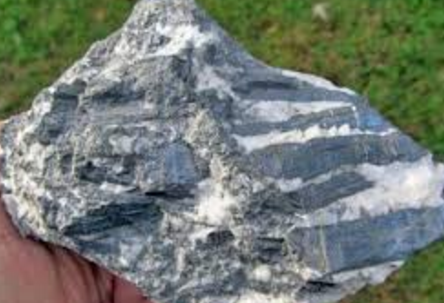Quicksilver deposits are of special interest because they are confined to shallow depths and their origin is comparatively clear. The absence or scarcity of cinnabar and the less common quicksilver minerals in deposits whose features point to deposition at high temperature implies that these minerals are not stable at such temperatures, and the fact that cinnabar is so readily and completely volatilized when heated emphasizes this point. In this respect quicksilver differs from gold and silver, which are present not only in epithermal deposits but in mesothermal and hypothermal deposits as well, although this apparent great temperature range of gold and silver is a subject for further discussion on a later page. Structural conditions and measurements of the amounts of local erosion also point to deposition near the surface, and the fact that few deposits can be profitably worked to a depth of 1,500 ft. is a further indication. The presence of hot springs in productive regions and the fact that some of these springs are depositing cinnabar and other minerals characteristic of cinnabar deposits add to the evidence of deposition at shallow depths.
Although cinnabar deposits are confined to volcanic regions, their occurrence in such distinctly different rocks as sandstone, limestone, and serpentine, as well as in the volcanic rocks themselves, shows that the kind of wall rock had little or no influence on deposition, and supports the conclusion, reached by Becker in 1888, that the deposits must have been derived from a deep-seated source. A recent development on the 1,500 level of the Dante mine in the Cripple Creek district adds further support to this conclusion. There, in the central part of a complex volcanic neck, intense fracturing followed by corrosive action by hot ascending solutions had reduced a large mass of rock to a rubble. The fragments of the rubble later became coated with pyrite and other minerals characteristic of early stages of mineral deposition, and during one of the latest stages cinnabar was deposited in the central part of the rubble mass. Distribution of the cinnabar indicated deposition along a vertical cylindral course, but without any distinct boundary, as if a liquid or gaseous solution, rising towards some outlet, had concentrated its action along the most direct route, although it doubtless spread and stagnated in the surrounding rubble. Continuous supply of new material along the direct route resulted in deposition of an appreciable though small quantity of cinnabar, whereas the surrounding stagnant solution, unable to renew its supply, deposited only a negligible quantity. The cinnabar has been deposited on or close by crystals of pyrite which evidently served as a precipitating agent. If allowance be made for erosion, the depth of deposition beneath the original volcanic surface was about 3,000 ft., and it may be imagined that in the absence of such a precipitating agent as pyrite the solutions could have risen much nearer to the surface before becoming supersaturated. No other minerals were clearly deposited at the same time as the cinnabar, although chalcedony of very late hypogene, if not of supergene, origin is present in considerable quantity. In short, this occurrence, though too small to be of commercial interest, affords convincing evidence of the deep-seated volcanic source of the solutions and their circulation at a very late and therefore relatively cool stage of the period of mineral deposition.
The quicksilver deposits comprise a belt in the Coast Ranges of California, in part extending northward into Oregon. A few minor occurrences are found in the foothills of the Sierra Nevada. Still another ill-defined belt runs through western Nevada and southern Idaho. An isolated cinnabar district is Terlingua, Texas. The accompanying minerals are stibnite, quartz, opal, dolomite and calcite, very rarely barite or fluorite (Terlingua). Difficulties are met in coordinating these deposits with the Cordilleran scheme of differentiation. In California and Oregon they occur with basalt, andesite, and rhyolite. In Nevada they are generally found with rhyolite. It is clear that the volatile constituents that formed them were held in the emanations until a very late stage close to the surface. They cannot be traced to any certain rock. Therefore, it is assumed that they originated in very deep magma basins where the effusive rocks were differentiated and that they had a long ascent.
The magmatic connection of these deposits still remains to be worked out. At first glance they seem to be unrelated to alkaline rocks. However, a little cinnabar is found in the gold telluride veins of Cripple Creek. In Italy cinnabar deposits seem to be related to alkaline trachytes. In the Ouachita region of alkaline rocks (Arkansas) quicksilver deposits have recently been discovered. Finally the sporadic occurrence of cinnabar in gold-quartz veins of California, Oregon, and Idaho may have some significance. Van der Veen believes that the deposits of Almaden, Spain, are genetically connected with diabase.
There is no doubt concerning the origin of the quicksilver deposits. Their deposition from hot ascending waters containing alkaline carbonates, silica, and boron has been proved; the mercury has been evidently carried by alkaline sulphides, combined with the sulphides of antimony, mercury, and arsenic, there is no need of summarizing these well- known researches.
